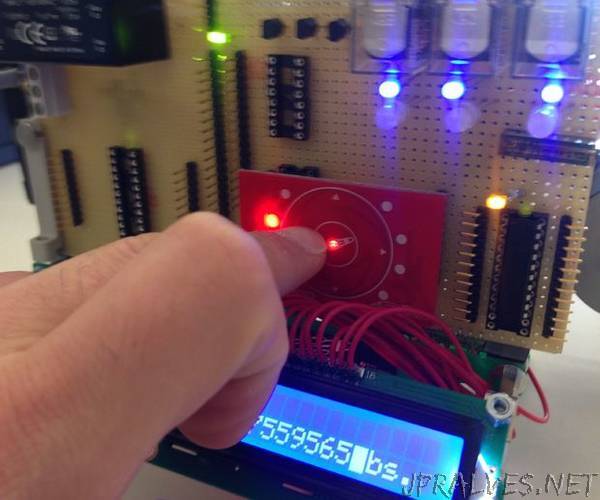
“In science and in engineering worlds keeping track of temperature aka (movement of the atoms in thermodynamics) is one of the fundamental physical parameters one should consider almost everywhere, starting from cell biology up to hard fuel rocket engines and thrusts. In computers and basically everywhere where I forgot to mention. The idea behind this instrument was pretty simple. While developing firmware I needed a test setup where I could test the firmware for the bugs instead of our products, which are handcrafted by technicians not to be causing any kind of malfunctions related to above mentioned. Those instruments tend to get hot and therefore constant and precise temperature monitoring is needed in order to keep all the parts of the instrument up and running, and which is not less important performing outstandingly. Using NTC thermistors to solve the task has several benefits. The NTCs (negative temperature coefficient) are special thermistors which change the resistance depending on the temperature. Those NTCs combined with the with calibration method discovered by Stanely Hart and John Steinhart as described in the article “Deep-Sea Research 1968 vol.15, pp 497-503 Pergamon Press” is the best solution in my case. The paper discusses methods of wide range temperature measurements (hundreds of Kelvins…) with those type of devices. In my understanding, coming from an engineering background, the simpler the system/sensor the better. No one wants to have something super complicated under the water, on kilometer depths which can cause issues while measuring temperature there only due to their complexity. I doubt the existence of the sensor to function similarly, maybe thermocouple will, but it requires some support circuitry and it is for extreme precision cases. So let’s make the use of those two, for the cooling system design which has several challenges. Some of them are: noise level, the effective sampling of the real-time value and possibly, all above mentioned in a simple and handy package for ease of repair and maintenance also, the costs per unit. Meanwhile writing the firmware, the setup got more and more tweaked and improved. At some point, I realized that it might as well become a standalone instrument due to its complexity.”
